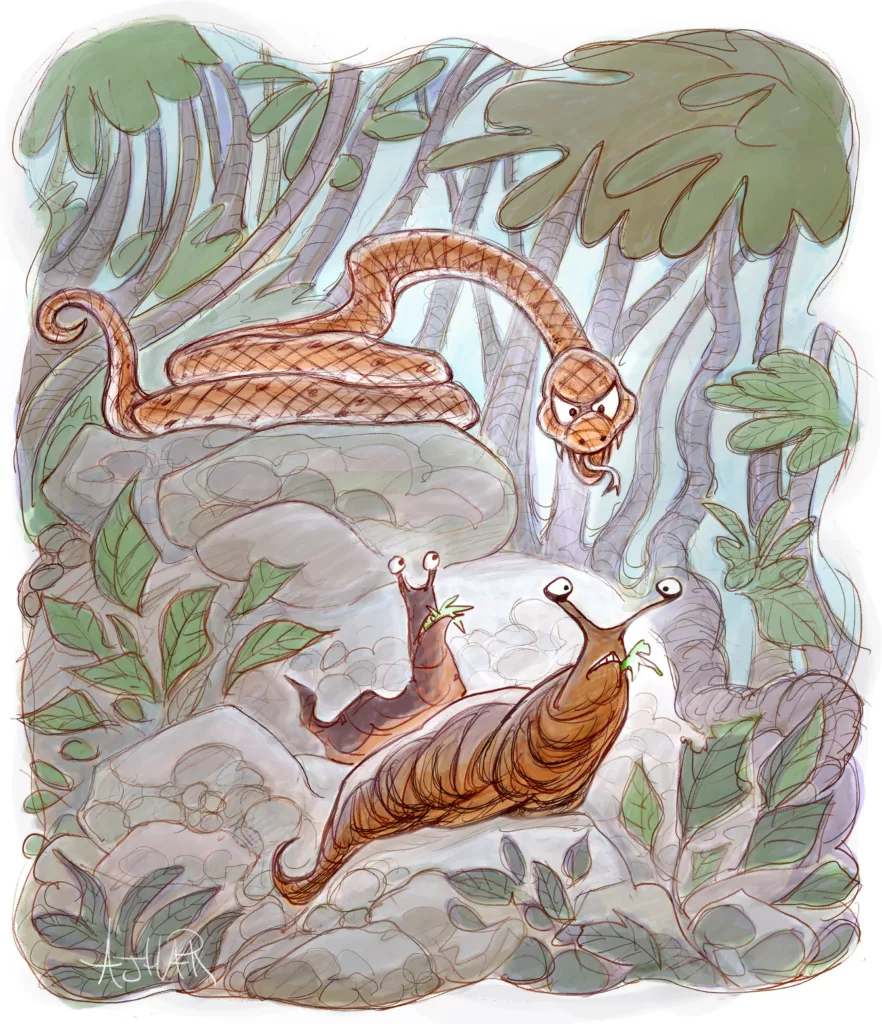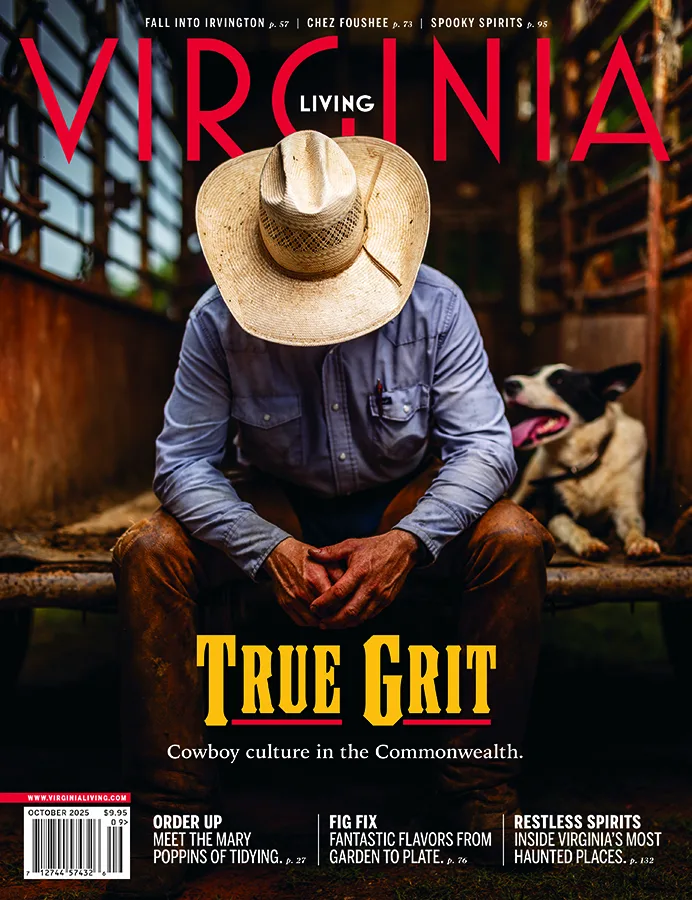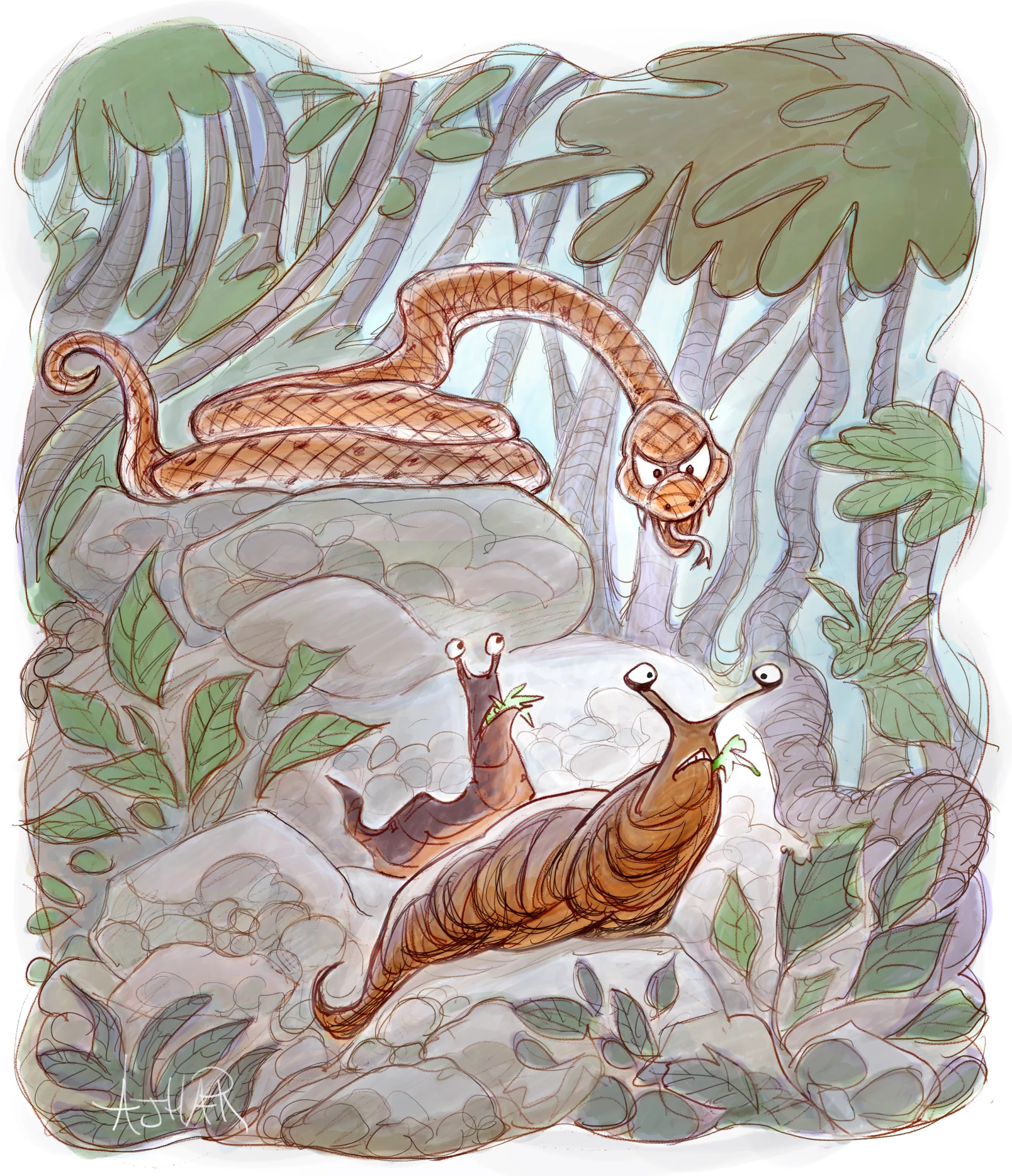It is a truth universally acknowledged that few people truly delight in finding a snake in their garden. Jason Gibson, however, is one who generally does. An associate professor of biology at Averett University in Danville, he is also a longtime (nearly three-decade) member of the Virginia Herpetological Society: if anyone could be called pro-snake, it would be Gibson.
Recognizing, however, that this might be something of a minority position, he likes to advance the cause of serpentdom by means of one of its least intimidating members: the DeKay’s brown snake. Also known as the northern brown snake, and Storeria dekayi in formal circles, these inoffensive Virginia natives, says Gibson, “are really nice ambassadors to introduce people to snakes.”
You may feel that “introduce” and “snakes” are two words you do not care ever to juxtapose, but Gibson would like to argue his case. The DeKay’s brown snake is nonvenomous, which is always a plus for a snake, particularly for one that’s reasonably common across the Commonwealth. They’re also on the smallish side of the snake spectrum, maxing out at well under 2 feet. And among their preferred diet choices are some least-favorite garden critters: snails and slugs. “They are known to be snail specialists,” says Gibson. “They have an adapted jaw to pull snails out of their shells, and they have ‘recurved’ teeth, so once they start ratcheting that jaw across you, there’s only one way that snail is going to go, which is into the snake’s esophagus.”
And as for slugs, well, I don’t know about you, but the ones in my garden are roughly the size of a city bus and seem to have a boundless appetite for my basil. As far as I’m concerned, there is no limit to the number of brown snakes I wouldn’t happily welcome to help themselves to a slug feast around here. (And on that point, don’t you think “DeKay’s slug-slayer” has a more compelling ring to it than the humdrum “brown snake”?)
So they’re useful snakes to have about, but beyond that, they’re interesting in their own right. For one thing, they’re “viviparous,” which is to say that the females give live birth, rather than laying eggs, to as few as three up to as many as several dozen snakelets (not a technical term). As you can imagine, a small snake is going to give birth to even smaller juveniles, and, once born, those itty bitty snakes are on their own to make their way in a world where “they would make a tasty snack for just about everything in the woods,” points out Gibson.
The conventional wisdom on these snakes is that they are secretive, reclusive, nocturnal, and spend much of their life underground or concealed in mulch and garden debris or beneath logs and rocks and the like. Gibson notes that they have chemoreceptors on their tongues that allow them to “taste” their way through the substrate, whether to find prey or for males to find females for mating. Even more impressively, their forked tongues are sensitive enough to be able to sense not only the chemical concentration, but also on which side of the fork the chemical signal is strongest, steering them in the correct direction.
But as to the “secretive, reclusive, and nocturnal” part, Gibson begs to differ. “If you are outside a lot, you see them pretty often,” he says. In an urban park he frequently visits in Danville, he sees them often. They seem particularly fond of wetlands, “probably going in there looking for tadpoles and small frogs and salamanders,” he suggests. He’s even seen them in trees on occasion—if not quite defying gravity, then certainly defying their reputation as subterranean. They’re also cold-tolerant, and he’s seen them out and about as early as February and as late as Christmas Day.
So if you should see one yourself, what lets you know it’s a harmless, friendly, slug-slaying brown snake? The Virginia Herpetological Society’s website (VirginiaHerpetological.com) has photos and descriptions, and you can see that the basic appearance is decidedly different from the snake everyone thinks they see: a copperhead. DeKay’s brown snake is brown to gray, with evenly spaced small dark dots along either side of its spine. Copperheads have darker, hourglass-shaped (sometimes described as “Hershey’s kiss” shaped) bands across the spine. And of course, a full-grown copperhead will also be much larger than a DeKay’s.
So even if you don’t love snakes, “If you see a snake, you shouldn’t just kill them,” says Gibson. “These snakes are very inoffensive, and they’re part of the ecosystem. They do control insect prey, and there are beneficial aspects to having them in the yard.” Plus, the survival of your basil might just depend on them.

This article originally appeared in the June 2025 issue.









